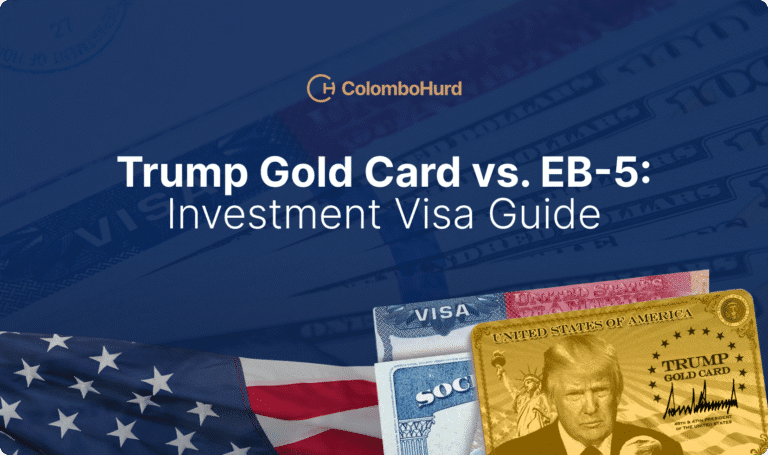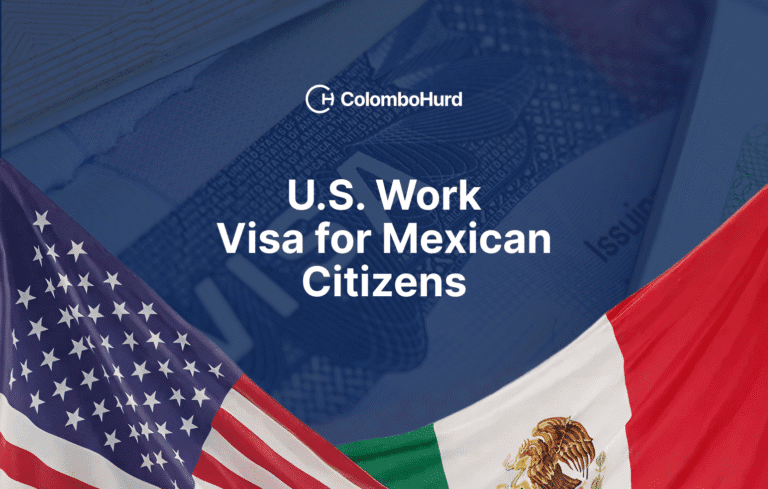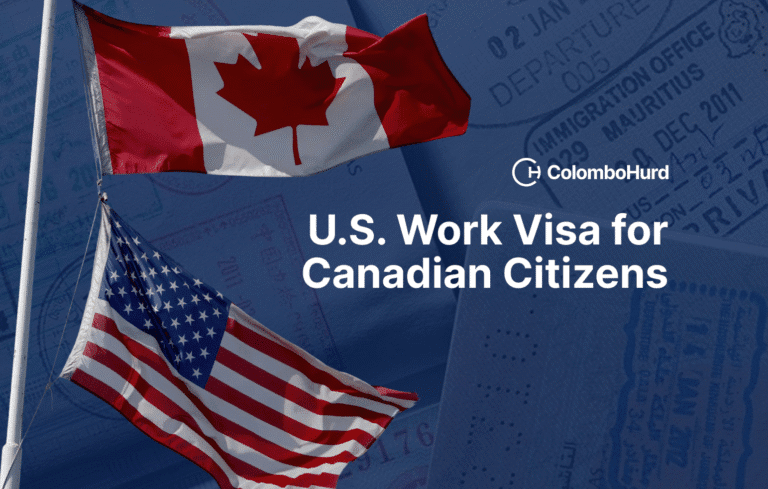On September 19, 2025, President Trump signed an Executive Order to set out his goals for the Gold Card program, facilitating expedited immigration for individuals who make significant financial contributions to the United States. The Order directs the Secretary of Commerce, in coordination with the Secretaries of State and Homeland Security, to establish a program with the following structure:
- Individual contributions: $1 million for expedited immigrant visas
- Corporate sponsorship: $2 million when paid by a corporation or similar entity on behalf of an individual
Colombo & Hurd Partner Salvatore “Sal” Picataggio, whose practice is focused heavily on the EB-5 Immigrant Investor Program, shares his insights on the proposed Trump Gold Card program in comparison to EB-5.
The Gold Card’s $1 million price point could position it against EB-5’s current investment requirements of $800,000 for Targeted Employment Areas (TEA) and $1.05 million for non-TEA investments.
As outlined in the Executive Order, qualifying individuals could obtain a “Trump Gold Card” by contributing $1 million directly to the U.S. Government. Businesses have a separate option: a “Trump Corporate Gold Card”, priced at $2 million, which can be transferred and used to sponsor a single foreign national for U.S. immigration benefits.
According to the Trumpcard.gov website, recipients of these cards would purportedly see their cases processed in record time and gain Lawful Permanent Resident status under the EB-1 and EB-2 categories.
In addition, the administration has previewed a higher-tier option: the “Trump Platinum Card.” With a $5 million threshold, this premium pathway has been announced but not yet finalized, and further details are expected in future policy releases.
Earlier in June 2025, the administration had launched a signup website for the program, which attracted 70,000 initial registrations from prospective investors worldwide. However, the gold card immigration program continues to face significant legal and tax obstacles that could substantially limit its appeal to investors. These challenges raise questions about the program’s long-term viability compared to the established EB-5 pathway.
The president suggested that individuals who participate in this U.S. gold card visa program would benefit the U.S. through their financial contributions and economic activity. While investor visas are common worldwide, the Gold Card program’s donation-based structure would differ from traditional investment programs that require job creation or specific business activities.
Gold Card vs. EB-5: Key Challenges and Distinctions
Although President Trump has added additional and new details for the Gold Card visa program through Executive Order, critical uncertainties remain about how it will function compared to the well-established EB-5 Immigrant Investor Program.
Legal and Structural Uncertainty
The EB-5 program was created by Congress in 1990, reformed in 2022, and reauthorized through 2027. It carries decades of oversight and a predictable adjudication framework. By contrast, the Gold Card would be based solely on executive authority, raising constitutional questions about whether such a program can bypass Congress’s traditional role in shaping immigration law, and it will likely be subject to litigation.
“Even with an Executive Order in place, all we have are some bullet points and a timeline,” Mr. Picataggio explains. “We know that it may be part of the EB-1 or EB-2 categories. Any set-asides for visa availability under those categories would need congressional action. Otherwise, the same backlogs apply, which are quite lengthy for Indian and Chinese applicants, and even the ‘rest of world’ category is backlogged for EB-2.”
Implementation Risks
The Executive Order directs multiple agencies to design application processes and establish fees, but no clear timeline has been provided for the 70,000 prospective registrants. Investors also face potential tax complications, since “donations” of $1–2 million could trigger gift tax and other obligations that have yet to be clarified.
Fundamental Program Differences
Job Creation Requirements: EB-5 requires investors to create or preserve at least 10 full-time U.S. jobs, directly tying foreign capital to American economic growth. The Gold Card, by contrast, would be donation-based and does not include employment requirements.
Visa Caps: EB-5 has a cap of 10,000 visas per year, with 3,000 reserved for high-unemployment or rural areas. The Gold Card Executive Order has not addressed whether caps or regional incentives will apply.
Regulatory Oversight: EB-5 includes a conditional residency period to ensure job creation requirements are met. It is unclear whether the Gold Card will include comparable safeguards or whether it could function as little more than a “cash-for-green-card” program.
EB-5: The Established, Job-Creating Alternative
While the Gold Card Order is generating headlines, the EB-5 Immigrant Investor Program remains the proven pathway for investors seeking permanent residency in the United States.
Competitive investment threshold: The EB-5 program requires investments of $800,000 (in targeted employment areas) to $1,050,000 (in non-targeted areas), which is comparable to the Gold Card individual donation amount of $1 million, but with job creation requirements
Job creation focus: Unlike a donation, EB-5 requires investments that create or preserve at least 10 permanent full-time jobs for U.S. workers, contributing directly to American employment
Established legal framework and Congressional protection: Since the EB-5 program was created by Congress, only Congress can abolish it, providing greater program stability compared to programs established through Executive Order
Family benefits: The EB-5 visa carries practical advantages for families, including residency for the investor, spouse, and unmarried children under 21. Spouses receive authorization to work legally in the United States, and children gain full access to the U.S. education system.
Path to citizenship: Investors and their families can pursue naturalization after five years of residency, creating a defined and reliable path toward U.S. citizenship.
Practical advantages: The EB-5 visa allows freedom to travel in and out of the United States, while its structure can provide tax advantages, such as reduced rates, exemptions on foreign assets, estate planning benefits, and various credits. The application process itself is designed to be more efficient, with the option to file multiple forms simultaneously, including the I-526, I-485, I-131, and I-765.
Availability: Unlike many other visa categories, EB-5 visas are currently available, avoiding the backlogs that slow progress in EB-1 and EB-2.
This combination of family security, economic impact, and predictability makes EB-5 the most reliable option for international investors considering a long-term future in the United States.
EB-5 Remains the Stable and Proven Option for Investors
At Colombo & Hurd, our view is clear: while the Trump Gold Card Executive Order has generated headlines, the U.S. EB-5 Immigrant Investor Program remains the established and legislatively anchored route to permanent residence through investment in the United States. EB-5 is protected by Congressional statute, has decades of regulatory oversight, and provides investors not only with a pathway to permanent residency but also with the assurance that their contributions directly support American job creation and economic growth.
As Mr. Picataggio notes, “Any potential expansion of options for immigrant investors or other high-skilled immigrants is an exciting proposition.” However, he emphasizes that EB-5 continues to be the stable, proven option with clear adjudication standards and a reliable framework.
“We are hopeful that announcements like these will ultimately work alongside existing opportunities rather than replace them,” Mr. Picataggio explains. “For years, we have helped clients use EB-5 to achieve their American dreams while also benefiting the United States through job creation and economic development.”
We continue to guide investors toward EB-5 because it remains the most dependable and legislatively grounded option for securing permanent residency through investment in the United States. While we closely track new initiatives like the Gold Card and Platinum Card, their long-term viability is still uncertain, and there has yet to be any development of a program for potential donors to use.
For EB-5, however, there are important timeline considerations: grandfathering protections will end in September 2026, and minimum investment thresholds are set to rise in January 2027. For those considering this path, acting within the current framework provides certainty and preserves access to today’s requirements.





